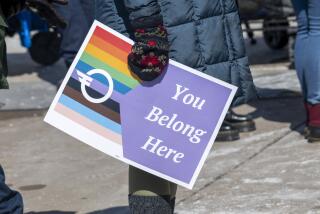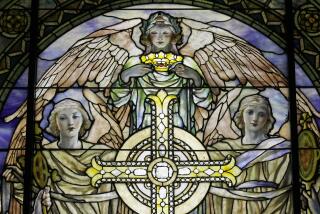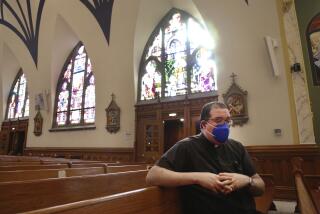Surveys Reveal Religious Peculiarities
- Share via
NEW YORK — Puzzles and peculiarities abound in information turned up these days by surveys of religious conditions in America.
Like these quirks:
* Most people say they read the Bible regularly, but are uncertain about its features. For example, fewer than half know who delivered the Sermon on the Mount. (Jesus did.)
* Churches and synagogues are rated the most capable among institutions in solving community problems, but clergy are ranked at the bottom of the scale on how much they should be paid.
* Sixty percent of Americans attended church last Easter, but a fourth of them didn’t know what the occasion signifies. (It celebrates the Resurrection of Christ.)
* Despite churchly laments about moral relativism and loss of a sense of right and wrong, 85% of Americans agree that there are clear moral guidelines of what’s good or evil that apply to everyone.
* Three-fourths of Americans believe in heaven, and most think they’re going there, while 60% believe in hell, but only 4% see much chance of going there.
These are among the curiosities found in recent surveys by the Gallup organization, usually of about 1,200 adults, and summarized by its Princeton Religion Research Center in its monthly Emerging Trends.
But one of the oddest findings of all came from an enormous survey of 113,000 adults about their religion done by the City University of New York Graduate School.
It found that the “melting pot” image still applies to religion in America, with most newcomers blending into the Christian and Jewish faiths that include almost 90% of American adults.
In recent years, sociologists and others had largely discarded the melting pot thesis regarding absorption of American immigrants, speaking instead of a new “pluralism” and “ethnicity.”
But the new survey issued in April, described as the most comprehensive profile yet assembled of the religious composition of America, found that newcomers, whether Arabs, Vietnamese or other Asians, are mostly Christians.
“Most immigrants are in the mainstream of the Judeo-Christian culture,” said sociologist Barry A. Kosmin, who directed the study. He said many were schooled by overseas missions before coming here.
It had been widely assumed that recent immigration had splintered the U.S. religious scene. But the figures, collected through nationwide telephone interviews over a 13-month period by the ICR Research Group of Media, Pa., found that 86.5% of the population is Christian and 1.8% Jewish.
Where variety showed up was in the many kinds of Christians--the denominational diversity that historically has typified the nation.
Most of the others either said they had no religion--7.5%--or declined to identify their religion--2.2%. Other faith groups, such as Muslims, Buddhists and Hindus, each numbered only a fraction of a percent.
In the recent Gallup surveys, 82% of Americans say they believe that the Bible is either the “literal” or “inspired” word of God, and more than half of them read the Bible at least monthly.
But half of them couldn’t name any of the four Gospels of the New Testament. The other half could name at least one. (The four are Matthew, Mark, Luke and John.)
Despite widespread Bible reading, sociologist Robert Wuthnow of Princeton University says biblical knowledge is “embarrassingly weak in our society.”
He adds: “In the past, biblical knowledge has risen with higher levels of education, but among young people today, the better educated are often as biblically illiterate as the less well educated.”
While churches and synagogues draw the highest rating among institutions considered able to deal with community problems, only 26% of respondents thought that members of the clergy should earn $40,000 a year.
That was deemed appropriate pay for physicians, lawyers, engineers and pharmacists by most respondents, and they tended to consider it OK for nurses, teachers and plumbers. But they generally put clergy in a lower $30,000 range.
More to Read
Sign up for Essential California
The most important California stories and recommendations in your inbox every morning.
You may occasionally receive promotional content from the Los Angeles Times.













